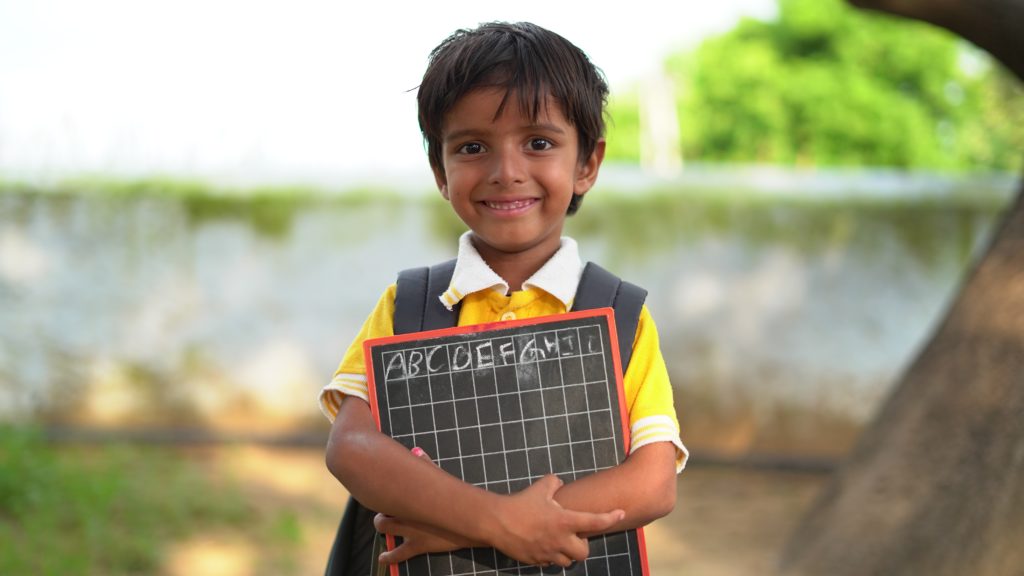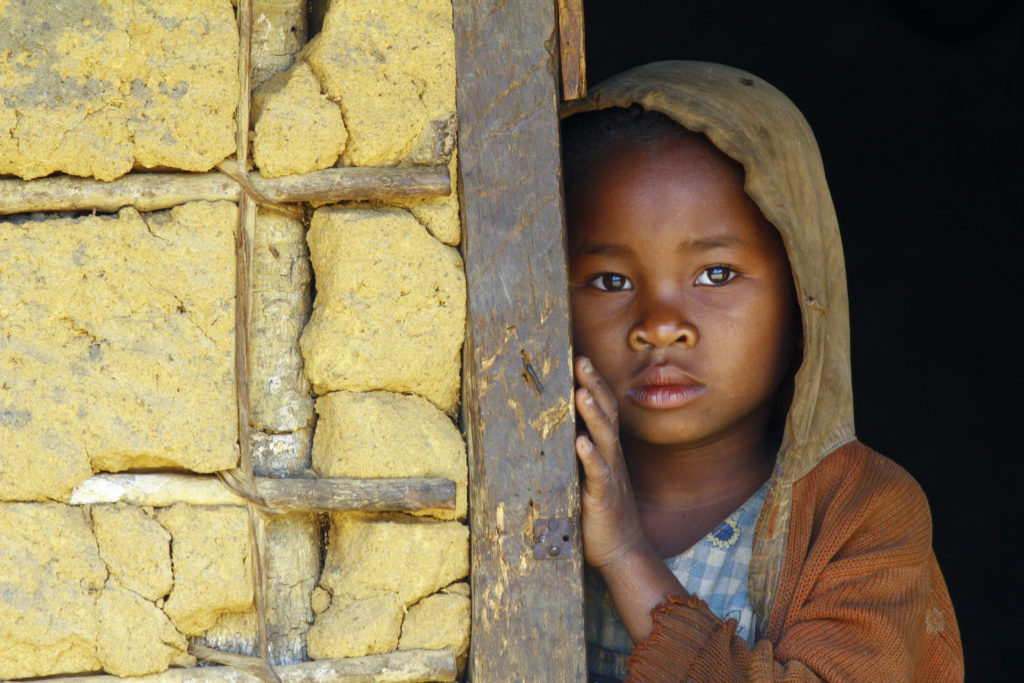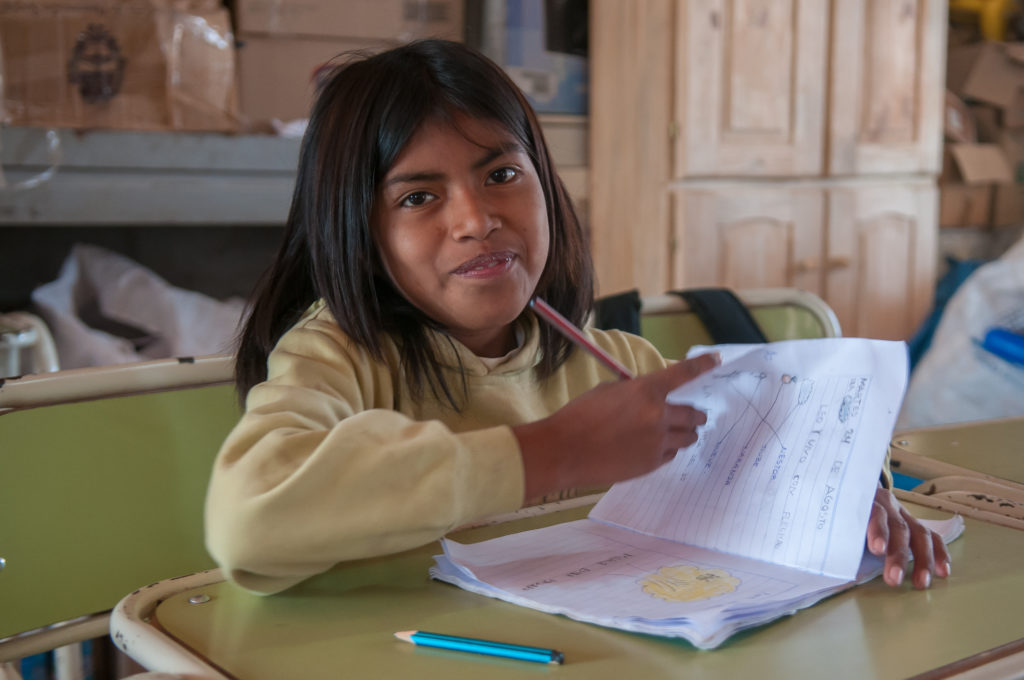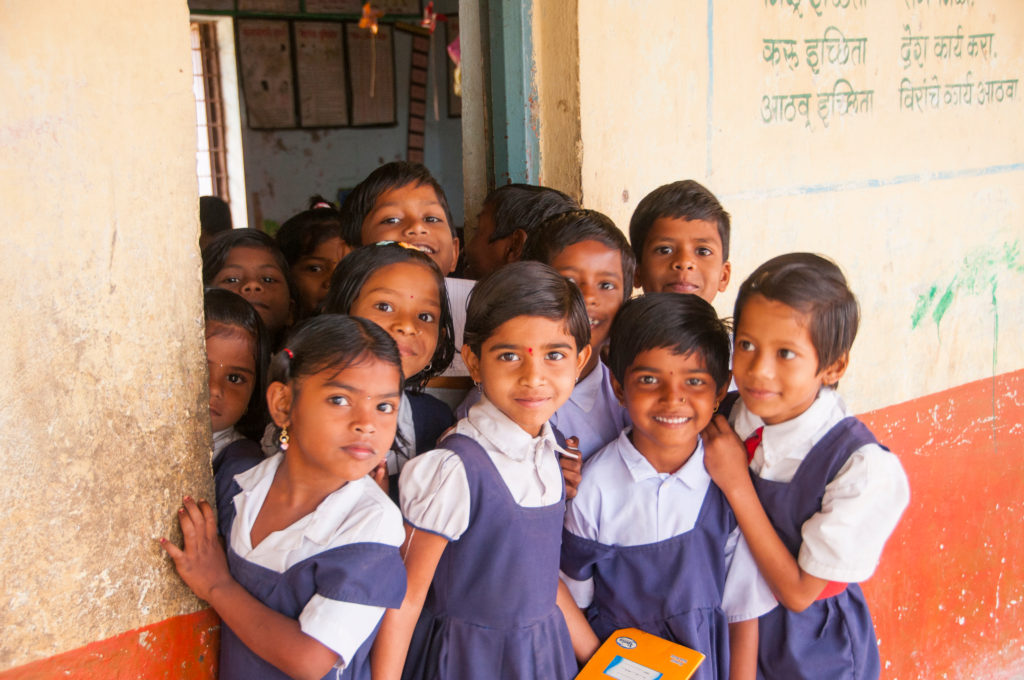Every child has the right to a quality education. This principle is enshrined in international agreements and recognized as crucial for individual and societal development. However, the global reality of children’s access to education remains complex and challenging. Despite significant progress in recent decades, millions of children worldwide are still deprived of this basic human right due to socioeconomic, cultural, and geographical factors.

Defining the right to education
Education is a fundamental human right protected by international law. It is recognized in several treaties and declarations, notably Article 26 of the Universal Declaration of Human Rights and Articles 28 and 29 of the Convention on the Rights of the Child (United Nations, 1948, 1989). These documents stipulate that everyone is entitled to free and compulsory primary education and to secondary and higher education based on merit (Inter-agency Network for Education in Emergencies [INEE], n.d.-a).
The right to education encompasses more than access to schooling. It includes the right to quality education that is inclusive and equitable and promotes the full development of human personality (INEE, n.d.-a). Education plays a pivotal role in fostering tolerance, understanding, and camaraderie among various nations and diverse racial and religious communities (United Nations Educational, Scientific, and Cultural Organization [UNESCO], n.d.).
Furthermore, the right to education is considered an “empowerment right,” meaning that it is essential for the exercise of other human rights. It contributes to individual freedom, empowerment, and development while advancing societal progress (Right to Education Initiative, 2014). However, the reality for many children worldwide is that their access to quality education falls far short of these ideals.
Addressing the global education gap
As of 2024, approximately 244 million children and youth are out of school globally, including 59 million children of primary school age (Hawkins et al., 2020; UNESCO, 2024). This staggering number highlights gaps in access to education, driven by factors such as poverty, conflict, and social exclusion.
This educational deficit has far-reaching consequences, affecting not only individual lives but also the broader socioeconomic development of nations. Barriers to accessing quality education make it more difficult to break cycles of poverty and limit opportunities for future generations (UNESCO, 2024b).
These barriers also hamper economic growth, social mobility, and the overall well-being of communities and countries. Children who are denied education are more likely to face unemployment and engage in low-paying jobs (Organization for Economic Co-operation and Development [OECD], 2014).
The high rate of uneducated children also has widespread implications for global stability and progress. Uneducated populations are more vulnerable to extremism, political manipulation, and social unrest (Delbruck, 1992). They are less equipped to tackle global challenges such as public health crises, technological disruptions, and climate change. As the world becomes increasingly interconnected and knowledge-driven, the educational divide threatens to widen the gap between developed and developing nations, exacerbating existing global inequalities (UNESCO, n.d.).
Causes of educational barriers
Poverty

Families living in poverty often cannot afford school fees, uniforms, or supplies, resulting in high dropout rates. Children from low-income households frequently start school behind their more affluent peers and may be required to work to support their families instead of attending school (National Association of Secondary School Principals [NASSP], n.d.). Factors associated with poverty—such as illness, parental illiteracy, and unemployment—increase the risk of not attending school and double the likelihood of dropping out (Ferguson et al., 2007).
Additionally, health problems resulting from malnutrition can force many children to abandon their education, underscoring the urgent need for interventions that address educational inequity (Cookson, 2020). Education poses significant challenges for children from socioeconomically disadvantaged backgrounds. Many of these children lack essential resources for regular school attendance, such as adequate nutrition, appropriate clothing, books, and reliable transportation.
For example, in the United States, 2.5 million children are in school districts that lack libraries (Langs, 2022). Additionally, many must contribute to their household income, which leaves them with limited time and energy for their studies (NASSP, n.d.).
Armed conflict
In areas affected by war or violence, the destruction of schools or their repurposing for military use severely limits access to education. For example, since Russia’s full-scale invasion in February 2022, Ukraine has experienced approximately 700 attacks on schools (Human Rights Watch, 2024). Airstrikes, shelling, and drone attacks have damaged educational facilities, including those serving students with disabilities (Human Rights Watch, 2024). The eastern and southern regions of Ukraine have been particularly affected (Human Rights Watch, 2024).
Children in these regions often experience trauma and instability, which significantly impacts their ability to learn (Tlili et al., 2024). The Global Coalition to Protect Education from Attack reports in “Education under Attack 2024” that approximately 6,000 attacks on educational institutions occurred in 2022 and 2023. The United Nations Children’s Fund (UNICEF, n.d.-a) emphasizes that such violence violates children’s right to education and jeopardizes their future. The destruction of educational facilities halts learning progress, as classrooms are reduced to rubble.
In conflict-affected areas like Sudan, additional challenges, such as overcrowded classrooms, insufficient funding, and teacher shortages, further hinder the delivery of quality education. Children also live in constant fear of forced recruitment by armed groups or attacks while at school (INEE, n.d.-b). Continuing education in safe environments during armed conflict is vital to providing children with a sense of normalcy, safety, and routine (Rushing, 2023).
Discrimination and marginalization
Systemic discrimination based on factors such as gender, ethnicity, or disability can prevent certain groups of children from accessing education. Girls, for example, often face cultural barriers and safety concerns that hinder their school attendance.
In regions such as Arab states, Central Asia, and Southern and Western Asia, girls face significant obstacles to education due to cultural traditions that prioritize boys’ schooling and assign girls to domestic labor (Outreach International, 2024; UNESCO, 2024a). Social norms reinforce this inequality, pressuring girls to adopt caregiver roles over pursuing formal education (Outreach International, 2024).
Violence and safety concerns further hinder their access—with an estimated 246 million children experiencing harassment and abuse on their way to school annually, disproportionately affecting girls (Global Citizen, 2024). Additional barriers include child marriage and gender-based violence, perpetuating gender discrimination (Global Citizen, 2024).
Marginalized communities also face systemic discrimination that restricts their access to quality education (Watkins, 2010). This discrimination can manifest as underfunded schools in impoverished neighborhoods, a lack of culturally relevant curricula, and biased treatment from educators. For children from Indigenous communities or linguistic minorities, being taught in a language that is not their mother tongue can pose additional barriers (Cookson, 2020).

Persistent inequality and exclusion are significant obstacles to education (Ferguson et al., 2007). In both developing and developed countries, children are often marginalized due to inequalities related to gender, health, and cultural identity, including ethnic origin, language, and religion (Watkins, 2010). This marginalization denies them essential learning experiences critical for their intellectual and social development.
Natural disasters and climate change
Natural disasters, such as floods, droughts, and earthquakes, can devastate educational infrastructure, displace communities, and disrupt children’s learning opportunities (UNICEF, 2019). Climate change is an escalating threat to education, particularly in vulnerable regions. Furthermore, in areas experiencing climate-induced migration, education systems often struggle to integrate displaced students, compounding the challenges faced by both students and schools (UNESCO, 2020).
The climate crisis highlights the urgent need for education systems to adapt and prepare students for a changing world. This involves developing curricula that emphasize sustainability, environmental stewardship, and the skills necessary for green jobs (International Labour Organization, 2019). Education is key to raising awareness about environmental issues, inspiring action, and equipping students to become responsible global citizens (UNESCO, 2020).
Most affected regions facing barriers to education
Sub-Saharan Africa remains the most impacted area. More than 20% of children aged roughly 6 to 11 are not enrolled in school, with this figure rising to one-third for youth aged around 12 to 14 (UNESCO Institute for Statistics, n.d.). UIS data further reveals that close to 60% of those aged 15 to 17 are also not attending school (UNESCO Institute for Statistics, n.d.). This region faces multiple challenges, including economic hardship, conflict, and inadequate infrastructure, all of which hinder the accessibility and quality of available education.
Central and Eastern Asia, as well as the Pacific, are also severely affected, with more than 27 million uneducated children in these areas (UNICEF, 2024). These regions struggle with issues such as rural-urban disparities, linguistic diversity, and economic constraints that impede universal access to education. In addition, these regions must contend with the ongoing problems of extreme educational poverty (defined as a child receiving less than two years of education) and educational poverty (less than four years of education) (Watkins, 2010).
The lack of schooling and poor education quality have significant repercussions. Children leave school without acquiring basic skills, which largely impedes the socioeconomic development of their respective countries (UNESCO, 2023). Without basic skills, children face limited opportunities, perpetuating cycles of disadvantage and underdevelopment.
Impact of the COVID-19 pandemic on education
The COVID-19 pandemic severely disrupted education systems worldwide (Statistical, Economic and Social Research and Training Centre for Islamic Countries, 2022; UNESCO, 2023a). At the height of the crisis, school closures impacted more than 1.6 billion students globally (International Labour Organization, 2022; UNESCO, 2021a). The shift to remote learning exposed and intensified existing inequalities, as many students in low-income countries lacked connectivity to the internet, devices, or suitable learning environments at home (World Bank, 2021).
The pandemic resulted in increased dropout rates, especially among marginalized groups. Many children who left school during the lockdowns have not returned, with girls being disproportionately disadvantaged (UNICEF, 2021). The long-term consequences of these disruptions are yet to be fully understood, but they are likely to have lasting effects on educational outcomes and future economic prospects (OECD, 2021).
Additionally, the COVID-19 pandemic significantly widened the educational divide. Students from wealthier backgrounds often benefited from private tutoring or alternative educational resources, while those from poorer families fell further behind (Azevedo et al., 2020). This exacerbation of educational inequality threatens to reverse years of progress in improving access to education and reducing poverty (United Nations, 2020).
Technology’s role in education
The digital divide in education
The digital divide in education presents a significant challenge across both developed and developing countries. In the United States, despite being a technologically advanced nation, approximately a third of teenagers face academic challenges due to limited access to technology at home (Langreo, 2022). For instance, 22% of teens often or sometimes rely on their cellphones to complete homework, while 12% report being unable to finish assignments due to unreliable internet or computer access (Langreo, 2022).
This issue is particularly pronounced among low-income households, where 24% of teens struggle with technology access compared to only 8% in wealthier families (Langreo, 2022). Similarly, in the European Union, although 70% of homes had broadband internet in 2021, rural areas lag significantly behind, with only 37% of rural households enjoying high-speed access (Masterson, 2022). This disparity underscores the uneven distribution of educational opportunities even in regions with high overall connectivity.
In many developing countries, deficient infrastructure, such as a reliable source of electricity and internet connectivity, hinders the adoption of digital learning tools (UNESCO, 2021). In sub-Saharan Africa, a staggering 89% of learners lack access to household computers, and 82% do not have internet connectivity (UNESCO, 2023b).
Additionally, around 56 million learners reside in areas without mobile network coverage, limiting their access to digital learning tools (UNESCO, 2023b). India has made strides in increasing internet usage. In 2023, rural India had 442 million active internet users, surpassing urban India’s 378 million users (Times of India, 2024).
Moreover, the rapid pace of technological change means that education systems must constantly evolve to keep up. To effectively integrate technology into the learning process, it is necessary to invest in infrastructure and devices, teacher training, and curriculum development to support students through various advancements in educational technology.
Opportunities and challenges in educational technology
Educational technology offers innovative solutions to personalize learning and reach remote students. Adaptive learning platforms, virtual reality experiences, and mobile learning apps have shown promise in engaging students and improving learning outcomes. However, concerns about data privacy and the possible adverse effects of excessive screen time on young learners must be addressed (Müller & Goldenberg, 2021; Selwyn, 2019).
Moreover, over-reliance on technology may exacerbate inequalities if digital solutions are not implemented thoughtfully (Reich, 2020). It is important to ensure that any technology complements rather than replaces human interaction in education and that solutions are designed with the needs of diverse learners in mind (UNESCO, 2021b).
Sustainable Development Goal 4 and international efforts
The United Nations’ (2015) Sustainable Development Goal 4 seeks to “ensure inclusive and equitable quality education and promote lifelong learning opportunities for all” by 2030. This goal has galvanized global efforts to improve education access and quality. Progress has been made in several areas, including increased enrollment rates in primary education and improved gender parity in many regions.

However, the pace of progress is insufficient to meet the 2030 target, particularly considering setbacks caused by the COVID-19 pandemic (World Bank, 2021a). International organizations, governments, and non-governmental organizations are working to accelerate progress through various initiatives, including targeted funding, policy reforms, and innovative educational programs (UNESCO, 2020a).
Written by Or Salama
Internally proofread by Aditi Partha
Last edited on 27 October 2024
References:
Azevedo, J. P., Hasan, A., Goldemberg, D., Iqbal, S. A., & Geven, K. (2020). Simulating the potential impacts of COVID-19 school closures on schooling and learning outcomes: A set of global estimates. The World Bank Research Observer, 35(2), 1-40.
Cookson, P. W., Jr. (2020, October 6). A world of hardship: deep poverty and the struggle for educational equity. Retrieved from Learning Policy Institute at https://learningpolicyinstitute.org/blog/covid-deep-poverty-struggle-education-equity, accessed on September 17, 2024.
Delbruck, J. (1992). The right to education as an international human right. German YB Int’l L., 35, 92.
Ferguson, H. B., Bovaird, S., & Mueller, M. P. (2007). The impact of poverty on educational outcomes for children. Paediatrics & Child Health, 12(8), 701–706.
Global Citizen. (2024, March 8). Barriers to girls’ education around the world. Global Citizen. Retrieved from Global Citizen at https://www.globalcitizen.org/en/content/barriers-to-girls-education-around-the-world/, accessed on October 23, 2024.
Global Coalition to Protect Education from Attack (GCPEA). (2024). Education under Attack 2024. New York: GCPEA. Retrieved from GCPEA at https://protectingeducation.org/wp-content/uploads/eua_2024.pdf, accessed on October 21, 2024.
Hawkins, R., Trucano, M., Cobo, C., Twinomugisha, A., & Sánchez Ciarrusta, I. (2020). Reimagining human connections: Technology and innovation in education at the World Bank. Retrieved from World Bank at https://documents1.worldbank.org/curated/en/829491606860379513/pdf/Reimagining-Human-Connections-Technology-and-Innovation-in-Education-at-the-World-Bank.pdf, accessed on October 13, 2024.
Human Rights Watch. (2024, June 20). Attacks on education in war surge globally. Retrieved from Human Rights Watch at https://www.hrw.org/news/2024/06/20/attacks-education-war-surge-globally, accessed on October 22, 2024.
Inter-agency Network for Education in Emergencies (INEE). (n.d.-a). Right to education. Retrieved from INEE at https://inee.org/collections/right-education, accessed on September 12, 2024.
INEE. (n.d.-b). Minimum standards for education: Preparedness, response, recovery. Retrieved from INEE at https://inee.org/minimum-standards, accessed on October 21, 2024.
International Labour Organization (ILO). (2019, December 12). Skills for a greener future: a global view. Retrieved from ILO at https://www.ilo.org/publications/skills-greener-future-global-view, accessed on September 17, 2024.
ILO. (2022). Global employment trends for youth 2022. Investing in transforming futures for young people. Retrieved from Career Industry Council of Australia (CICA) at https://cica.org.au/wp-content/uploads/Global-employment-trends-for-youth-2022.-Geneva-ILO-2022.pdf, accessed on October 2, 2024.
Langreo, L. (2022, June 7). The ‘Homework Gap’ persists. Tech equity is one big reason why. Retrieved from EducationWeek at https://www.edweek.org/technology/the-homework-gap-persists-tech-equity-is-one-big-reason-why/2022/06, accessed on October 22, 2024.
Langs, J. (2022, April 4). Poverty impedes children’s education long before they enter the classroom—here’s how we can change that. Forbes. Retrieved from Forbes at https://www.forbes.com/sites/forbeseq/2022/04/04/poverty-impedes-childrens-education-long-before-they-enter-the-classroom—heres-how-we-can-change-that/, accessed on October 21, 2024.
Masterson, V. (2022, September 7). 70% of homes in the EU have high-speed internet – but a digital divide persists. Retrieved from World Economic Forum at https://www.weforum.org/agenda/2022/09/eu-high-speed-internet-digital-divide/, accessed on October 22, 2024.
Mbock, R., & Chan, C. (2023). Global Partnership for Education Knowledge and Innovation Exchange (KIX) annual report 2022–2023: Scaling educational options for out-of-school children.
Mighati, H. (2022, October 11). Early school dropouts in developing nations. Retrieved from The Borgen Project at https://borgenproject.org/early-school-dropouts/, accessed on September 15, 2024.
Ministry of Education, Government of India. (n.d.). PM e-VIDYA. Retrieved at Ministry of Education, Government of India from https://pmevidya.education.gov.in, accessed on October 21, 2024.
Müller, L.-M., & Goldenberg, G. (2021). Education in times of crisis: Effective approaches to distance learning. A review of research evidence on supporting all students’ learning, wellbeing and engagement. Retrieved from Chartered College of Teaching at https://chartered.college/wp-content/uploads/2021/02/MullerGoldenbergFEB21_FINAL-1.pdf, accessed on September 19, 2024.
National Association of Secondary School Principals (NASSP). (n.d.). Poverty and its impact on students’ education. Retrieved from NASSP at https://www.nassp.org/poverty-and-its-impact-on-students-education/, accessed on September 12, 2024.
Organization for Economic Co-operation and Development (OECD). (2014, September 9). Education at a Glance 2014: OECD Indicators. Retrieved from OECD at https://www.oecd.org/en/publications/2014/09/education-at-a-glance-2014_g1g44022.html, accessed on October 3, 2024.
OECD. (2021). The state of school education: one year into the COVID pandemic. Retrieved from OECD at https://www.oecd.org/en/publications/the-state-of-school-education_201dde84-en.html, accessed on October 3, 2024.
Outreach International. (2024, May). Gender inequality in education. Retrieved from Outreach International at https://outreach-international.org/blog/gender-inequality-in-education/, accessed on October 22, 2024.
Plan Ceibal. (n.d.). What is Plan Ceibal? Retrieved at Ceibal from https://www.ceibal.edu.uy/en/institucional, accessed on October 21, 2024.
Reich, J. (2020). Failure to disrupt: Why technology alone can’t transform education. Harvard University Press.
Right to Education Initiative (RTE). (2014, January). International instruments: right to education. Retrieved from RTE at https://www.right-to-education.org/sites/right-to-education.org/files/resource-attachments/RTE_International_Instruments_Right_to_Education_2014.pdf, accessed on September 12, 2024.
Rushing, E. (Host). (2023, September 13). Protecting education from attack during armed conflict [Audio podcast episode]. In Humanity in War. Retrieved from International Committee of the Red Cross at https://blogs.icrc.org/law-and-policy/2023/09/13/protecting-education-from-attack-during-armed-conflict/, accessed on October 21, 2024.
Selwyn, N. (2019). Should robots replace teachers? AI and the future of education. Polity Press.
Statistical, Economic and Social Research and Training Centre for Islamic Countries (SESRIC). (2022, March). Socio-economic impacts of the COVID-19 pandemic in OIC countries: Pathways for sustainable and resilient recovery. Retrieved from SESRIC at https://sesricdiag.blob.core.windows.net/sesric-site-blob/files/article/802.pdf, accessed on September 28, 2024.
Times of India. (2024, February 28). Over half of 821 million internet users from rural India: Study. Retrieved from Times of Inda at https://timesofindia.indiatimes.com/business/india-business/over-half-of-821mn-internet-users-from-rural-india-study/articleshow/108057081.cms, accessed on October 22, 2024.
Tlili, A., Salha, S., Shehata, B., Zhang, X., Endris, A., Arar, K., Mishra, S., & Jemni, M. (2024). How to maintain education during wars?: An integrative approach to ensure the right to education. Open Praxis, 16(2), 160-179.
United Nations. (1948, December 10). Universal Declaration of Human Rights. Retrieved from United Nations at https://www.un.org/en/about-us/universal-declaration-of-human-rights, accessed on September 16, 2024.
United Nations. (1989, November 20). Convention on the Rights of the Child. Retrieved from the Office of the High Commissioner for Human Rights at https://www.ohchr.org/en/instruments-mechanisms/instruments/convention-rights-child, accessed on September 16, 2024.
United Nations. (2015). Transforming our world: the 2030 Agenda for Sustainable Development. Retrieved from United Nations at https://sdgs.un.org/2030agenda, accessed on September 16, 2024.
United Nations. (2020, August). Policy brief: Education during COVID-19 and beyond. Retrieved from UN Sustainable Development Group (UNSDG) at https://unsdg.un.org/resources/policy-brief-education-during-covid-19-and-beyond, accessed on October 10, 2024.
United Nations Children’s Fund (UNICEF). (2019). It is getting hot. Call for education systems to respond to the climate crisis. Retrieved from UNICEF at https://www.unicef.org/eap/media/4596/file/It%20is%20getting%20hot:%20Call%20for%20education%20systems%20to%20respond%20to%20the%20climate%20crisis.pdf, accessed on September 27, 2024.
UNICEF. (2021, March 2). COVID-19: Schools for more than 168 million children globally have been completely closed for almost a full year, says UNICEF. Retrieved from UNICEF at https://www.unicef.org/press-releases/schools-more-168-million-children-globally-have-been-completely-closed, accessed on September 16, 2024.
UNICEF. (2024). The state of the world’s children. Retrieved from UNICEF at https://www.unicef.org/reports/state-of-worlds-children, accessed on September 16, 2024.
UNICEF. (n.d.-a). Education in emergencies. Retrieved from UNICEF at https://www.unicef.org/education/emergencies, accessed on October 22, 2024.
UNICEF. (n.d.-b). Education overview. Retrieved from UNICEF at https://data.unicef.org/topic/education/overview/, accessed on September 16, 2024.
United Nations Educational, Scientific, and Cultural Organization (UNESCO). (2020, June 22). Education in a post-COVID world: Nine ideas for public action. Retrieved from UNESCO at https://www.unesco.org/en/articles/education-post-covid-world-nine-ideas-public-action, accessed on September 12, 2024.
UNESCO. (2020a). Global Education Monitoring Report 2020: Inclusion and education: All means all. Retrieved from UNESDOC at https://unesdoc.unesco.org/ark:/48223/pf0000373718, accessed on September 12, 2024.
UNESCO. (2021). Global Education Monitoring Report 2021/2: non-state actors in education: who chooses? Who loses? Retrieved from UNESDOC at https://unesdoc.unesco.org/ark:/48223/pf0000379875, accessed on September 16, 2024.
UNESCO. (2021a, March 19). One year of COVID-19 and education disruption: Where do we stand? Retrieved from UNESCO at https://www.unesco.org/en/articles/one-year-covid-19-education-disruption-where-do-we-stand, accessed on September 16, 2024.
UNESCO. (2021b). Reimagining our futures together: a new social contract for education. Retrieved from UNESDOC at https://unesdoc.unesco.org/ark:/48223/pf0000379707, accessed on September 16, 2024.
UNESCO. (2023). Global Education Monitoring Report 2023. Technology in education: A tool on whose terms? Retrieved from UNESCO at https://www.unesco.org/gem-report/en/technology, accessed on September 16, 2024.
UNESCO. (2023a, April 20). Education: From disruption to recovery. Retrieved from UNESCO at https://www.unesco.org/en/covid-19/education-disruption-recovery, accessed on September 12, 2024.
UNESCO. (2023b, April 20). Startling digital divides in distance learning emerge. Retrieved from UNESCO at https://www.unesco.org/en/articles/startling-digital-divides-distance-learning-emerge, accessed on October 22, 2024.
UNESCO. (2024, July 17). What you need to know about the right to education. Retrieved from UNESCO at https://www.unesco.org/en/right-education/need-know, accessed on September 12, 2024.
UNESCO. (2024a). Her education, our future: UNESCO fast-tracking girls’ and women’s education. Retrieved from UNESCO at https://www.unesco.org/en/gender-equality/education/her-education-our-future, accessed on September 12, 2024.
UNESCO. (2024b, January 23). International legal instruments for the right to education. Retrieved from UNESCO at https://www.unesco.org/en/right-education/legal-instruments, accessed on September 12, 2024.
UNESCO. (n.d.). The right to education. Retrieved from UNESCO at https://www.unesco.org/en/right-education, accessed on September 12, 2024.
UNESCO Institute for Statistics. (n.d.). Education in Africa. Retrieved from UNESCO Institute for Statistics at https://uis.unesco.org/en/topic/education-africa, accessed on October 26, 2024.
van Dijk, J. A. (2020). The digital divide. John Wiley & Sons.
Watkins, K. (2010). Reaching the marginalized-the key to Education for All. ZEP: Zeitschrift für internationale Bildungsforschung und Entwicklungspädagogik, 33(3), 8-1.
World Bank. (2021, January 22). Urgent, effective action is required to quell the impact of COVID-19 on education worldwide. Retrieved from World Bank at https://www.worldbank.org/en/news/immersive-story/2021/01/22/urgent-effective-action-required-to-quell-the-impact-of-covid-19-on-education-worldwide, accessed on September 12, 2024.
World Bank. (2021a). The state of the global education crisis: A path to recovery. Retrieved from World Bank at https://documents1.worldbank.org/curated/en/416991638768297704/pdf/The-State-of-the-Global-Education-Crisis-A-Path-to-Recovery.pdf, accessed on September 13, 2024.
World Bank. (2022). World Development Report 2022: Finance for an equitable recovery. Retrieved from World Bank at https ://www.worldbank.org/en/publication/wdr2022, accessed on September 13, 2024.
World Bank. (2023, October 10). Education Finance Watch 2023. Retrieved from World Bank at https://documents.worldbank.org/en/publication/documents-reports/documentdetail/099103123163755271/p17813506cd84f07a0b6be0c6ea576d59f8, accessed on September 13, 2024.

